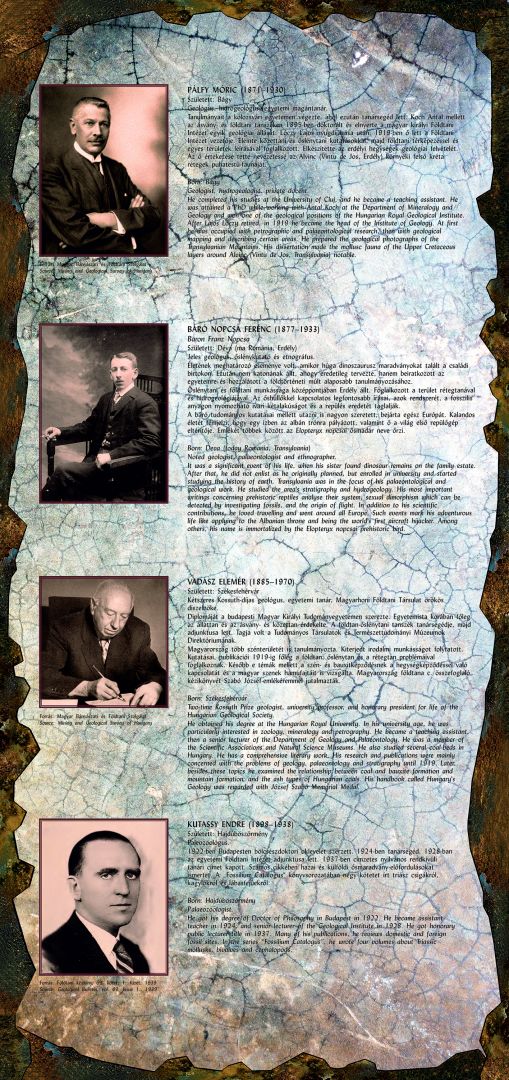HUGARIAN DINOSAUR RESEARCH
Hungarian researchers
PÁLFY MÓRIC (1871–1930)
Born: Bágy
Geologist, hydrogeologist, private docent.
He completed his studies at the University of Cluj, and he became a teaching assistant. He was attained a PhD while working with Antal Koch at the Department of Mineralogy and Geology and won one of the geological positions of the Hungarian Royal Geological Institute. After Lajos Lóczy retired, in 1919 he became the head of the Institute of Geology. At first he was occupied with petrographic and palaeontological research, then with geological mapping and describing certain areas. He prepared the geological photographs of the Transylvanian Mountains. His dissertation made the mollusc fauna of the Upper Cretaceous layers around Alvinc (Vintu de Jos, Transylvania) notable.
Source: Mining and Geological Survey of Hungary
Baron Franz Nopcsa (1877–1933)
Born: Deva (today Romania, Transylvania)
Noted geologist, palaeontologist and ethnographer.
It was a significant event of his life, when his sister found dinosaur remains on the family estate. After that, he did not enlist as he originally planned, but enrolled in university and started studying the history of earth. Transylvania was in the focus of his palaeontological and geological work. He studied the area’s stratigraphy and hydrogeology. His most important writings concerning prehistoric reptiles analyse their system, sexual dimorphism which can be detected by investigating fossils, and the origin of flight. In addition to his scientific contributions, he loved travelling and went around all Europe. Such events mark his adventurous life like applying to the Albanian throne and being the world's first aircraft hijacker. Among others, his name is immortalized by the Elopteryx nopcsai prehistoric bird.
VADÁSZ ELEMÉR (1885–1970)
Born: Székesfehérvár
Two-time Kossuth Prize geologist, university professor, and honorary president for life of the Hungarian Geological Society.
He obtained his degree at the Hungarian Royal University. In his university age, he was particularly interested in zoology, mineralogy and petrography. He became a teaching assistant, then a senior lecturer of the Department of Geology and Palaeontology. He was a member of the Scientific Associations and Natural Science Museums. He also studied several coal-beds in Hungary. He has a comprehensive literary work. His research and publications were mainly concerned with the problems of geology, palaeontology and stratigraphy until 1919. Later, besides these topics he examined the relationship between coal and bauxite formation and mountain formation, and the ash types of Hungarian coals. His handbook called Hungary's Geology was rewarded with József Szabó Memorial Medal.
Source: Geological Bulletin, Vol. 90. Issue 1., 1960
KUTASSY ENDRE (1898-1938)
Born: Hajdúböszörmény
Palaeozoologist.
He got his degree of Doctor of Philosophy in Budapest in 1922. He became assistant teacher in 1924, and senior lecturer of the Geological Institute in 1928. He got honorary public lecturer title in 1937. Many of his publications, he reviews domestic and foreign fossil sites. In the series “Fossilium Catalogus”, he wrote four volumes about Triassic mollusks, bivalves and cephalopods.
Source: Főzy István
